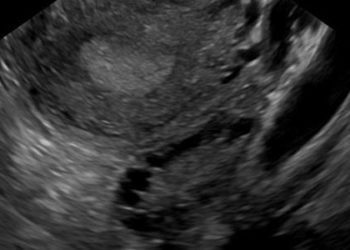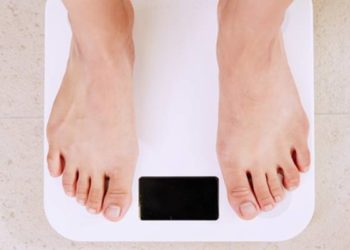2 Minute Medicine Rewind February 17 – February 23, 2014
Image: PD
In this section, we will highlight the key high-impact studies, updates, and analyses published in medicine during the past week.
A Trial of Treatment for Acute Otorrhea in Children with Tympanostomy Tubes
Acute otorrhea is a common post-operative complaint in children who undergo a myringotomy and tubes procedure for restoration of hearing in persistent otitis media with effusion or for prevention of future episodes in recurrent otitis media. Although ottorrhea is accompanied by foul odor, pain, and fever, few studies have looked at its ideal treatment. In this open label, pragmatic trial, 230 children who developed ottorhea post-operatively were randomized to receive hydrocortisone–bacitracin–colistin eardrops or oral amoxicillin–clavulanate suspension, or to undergo observation. Two weeks following initiation of treatment, 5%, 44% (risk difference, −39 percentage points; 95% CI, −51 to −26; NNT, 3), and 55% (risk difference, −49 percentage points; 95% CI, −62 to −37; NNT, 2) of children with eardrops, oral antibiotics, or observation, still suffered from otorrhea, respectively. Given there was no difference in adverse events or complications of otitis media and increased effectiveness, antibiotic-glucocorticoid eardrops should be used in children with acute tympanostomy-tube otorrhea.
Bevacizumab plus Radiotherapy–Temozolomide for Newly Diagnosed Glioblastoma
Current standard of care for glioblastoma, the most common primary brain cancer, includes surgical resection followed by concurrent radiotherapy and temozolomide, and later by adjuvant temozolomide. Recent phase 1/2 trials have shown promising results when adding bevacizumab, an anti-VEGF-A molecule, to the current regimen. In this phase 3 clinical trial, 458 patients newly diagnosed with glioblastoma were randomized to receive intravenous bevacizumab or placebo, plus radiotherapy and oral temozolomide, for 6 weeks, followed by bevacizumab or placebo, plus temozolomide, for six 4-week cycles, followed by bevacizumab monotherapy or placebo as long as tolerated. The median progression-free survival was 10.6 months in the bevacizumab group compared to 6.2 months in the placebo group (stratified hazard ratio for progression or death, 0.64; 95% confidence interval [CI], 0.55 to 0.74; P<0.001). However, there was no statistically significant difference in the overall survival, with a survival rate of 72.4% and 66.3% at 1 year (P=0.049), and of 33.9% and 30.1% at 2 years (P=0.24), for the two groups, respectively. The improved progression-free survival in the bevacizumab group should therefore be weighted against the higher rate of adverse events when discussing the possible therapy with patients.
Effect of Citalopram on Agitation in Alzheimer Disease: The CitAD Randomized Clinical Trial
Agitation in Alzheimer’s disease is common, yet difficult to treat. Antipsychotic medications continue to be used despite safety issues and uncertain efficacy. Given that the SSRI Citalopram is frequently used in older individuals, it has been suggested as an alternative to antipsychotic drugs for agitation in dementia. In this randomized control trial, 186 Alzheimer’s patients with significant agitation were randomized to receive a psychosocial intervention plus either citalopram or placebo for 9 weeks. Patients in the citalopram group showed significant improvement in both the Neurobehavioral Rating Scale agitation subscale (NBRS-A) (4.1 vs. 5.4 (95% CI, 2.6-3.5; P = .01) and the modified Alzheimer Disease Cooperative Study-Clinical Global Impression of Change (mADCS-CGIC) (40% vs 26%), compared to those in the placebo group, respectively. However, citalopram showed concerning cardiac adverse effects and thus cannot currently be recommended as a treatment option at the dose studied.
Treatment of Primary Sjögren Syndrome With Rituximab: A Randomized Trial
Although hydroxychloroquine, corticosteroids, methotrexate, or immunosuppressants are often prescribed to patients with Primary Sjögren syndrome (pSS) , no systemic treatment has been proved to significantly affect the course of the disease. However, recent studies have shown a promising role for anti-CD20 antibody rituximab, which induces rapid B-cell depletion in blood and salivary glands. In this randomized control trial, 120 patients with pSS were randomized to rituximab or placebo. An improvement of at least 30 mm in the visual analogue scales (VASs) fatigue score (primary end point) was more common in the rituximab group at weeks 6 (P < 0.001) and 16 (P = 0.012), but there was no significant difference between groups (difference, 1.0% [95% CI, −16.7% to 18.7%]) at week 24. Thus, at this point, rituximab cannot be recommended as a superior therapy.
Elevated blood pressure (BP) during childhood has a strong correlation with elevated BP and its health consequences later in life. Given that childhood obesity is correlated with childhood elevated BP and that weight loss can help treat hypertension, it had been hypothesized that childhood obesity prevention programs could also improve childhood BP. In this meta-analysis, the data from 23 studies (18,925 participants) looking at childhood diet and/or physical activity interventions was analyzed and a change in both systolic and diastolic blood pressure was determined. The aggregated intervention effect was -1.64 mmHg (95% CI: -2.56, -0.71; P=0.001) for SBP and -1.44 mmHg (95% CI: -2.28, -0.60; P=0.001) for DBP, and the combined diet and physical activity interventions brought a significantly greater reduction in BP than the interventions that solely targeted diet or physical activity. Thus, in order to reduce BP, childhood intervention programs should be targeted at both diet modification and increased physical activity.
© 2012-2014 2minutemedicine.com. All rights reserved. No works may be reproduced without written consent from 2minutemedicine.com. Disclaimer: We present factual information directly from peer reviewed medical journals. No post should be construed as medical advice and is not intended as such by the authors or by 2minutemedicine.com. PLEASE SEE A HEALTHCARE PROVIDER IN YOUR AREA IF YOU SEEK MEDICAL ADVICE OF ANY SORT. Content is produced in accordance with fair use copyrights solely and strictly for the purpose of teaching,





![Weight loss may decrease urinary incontinence in male diabetics [Look AHEAD Study]](https://www.2minutemedicine.com/wp-content/uploads/2014/02/Blue_circle_for_diabetes.svg_-e1379123390777-75x75.png)


